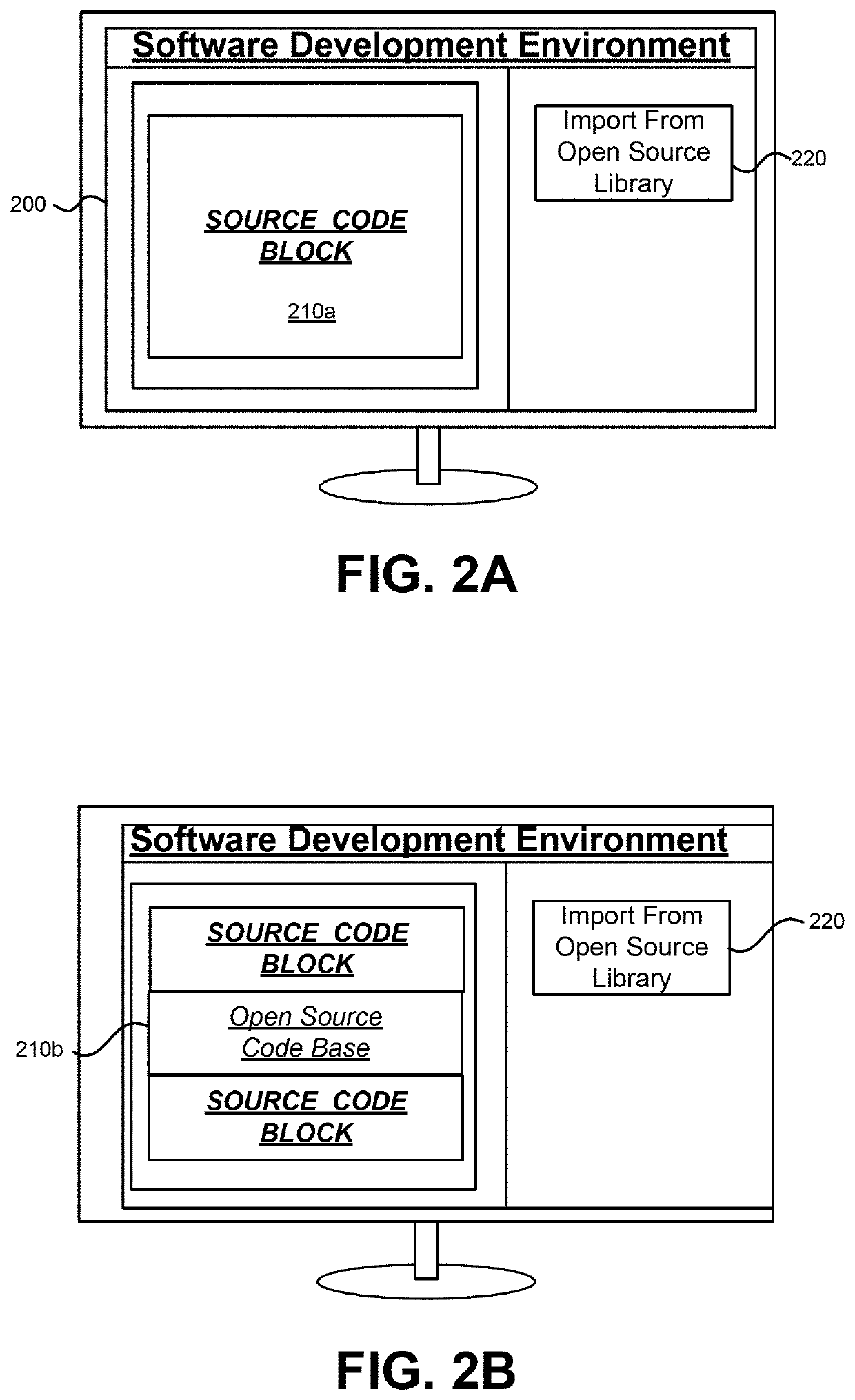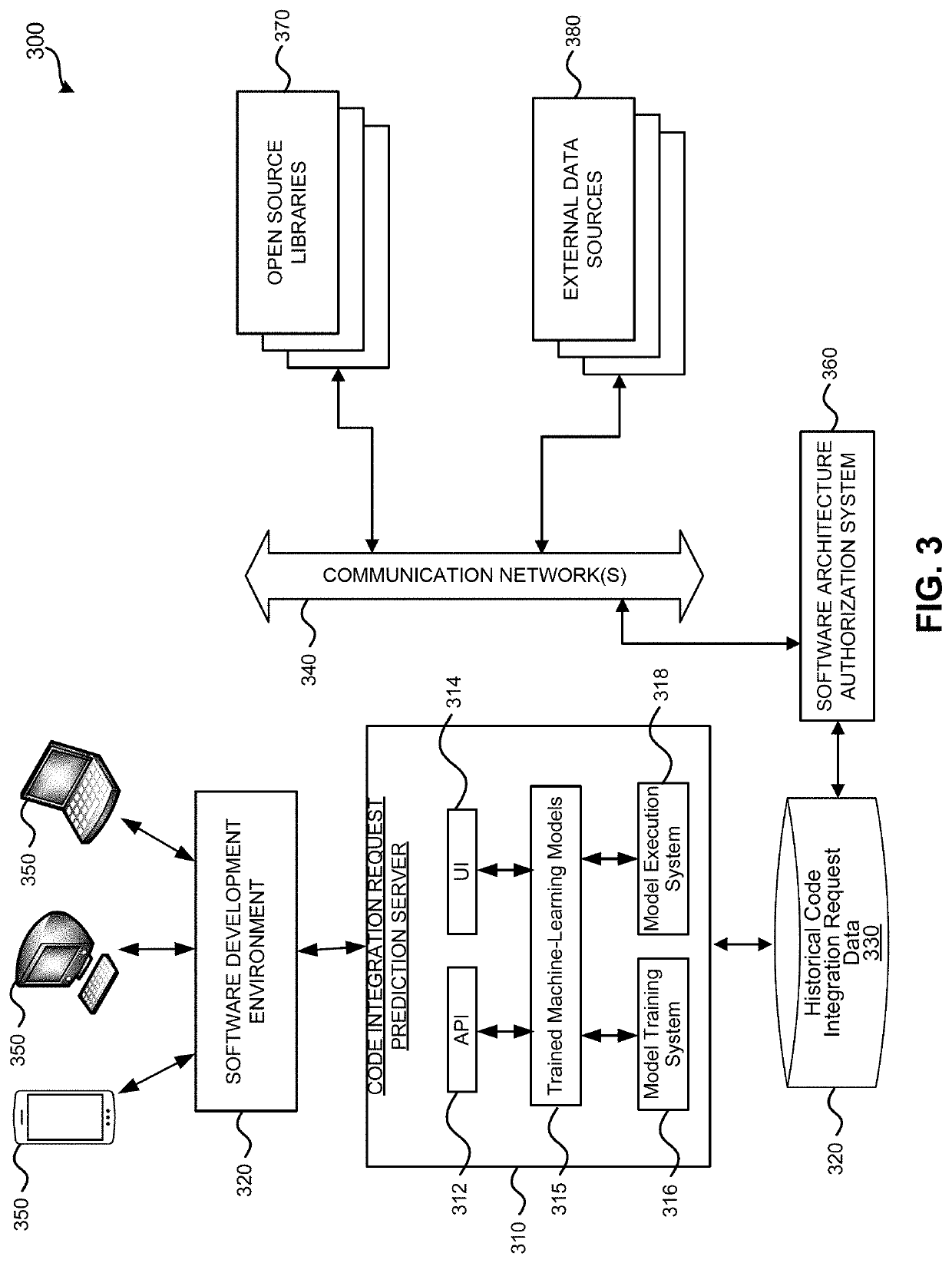Techniques for integrating segments of code into machine-learning model
a machine learning and code integration technology, applied in the field of system and technique for machine learning, can solve the problems of lack of interoperability, data scientists may not have programming skills to generate the code necessary to build custom machine learning models, and the available machine learning tools do not store the various machine learning model components
- Summary
- Abstract
- Description
- Claims
- Application Information
AI Technical Summary
Benefits of technology
Problems solved by technology
Method used
Image
Examples
Embodiment Construction
[0029]Certain embodiments of the present disclosure relate to systems, devices, computer-readable medium, and computer-implemented methods for implementing various techniques for machine learning. The machine-learning techniques can allow a user (i.e., a data scientist) to generate machine-learning applications without having detailed knowledge of the cloud-based network infrastructure or knowledge of how to generate code for building the model. The machine-learning platform can analyze the identified data and the user provided desired prediction and performance characteristics to select one or more library components and associated API to generate a machine-learning application.
[0030]The machine-learning techniques can employ a chatbot to indicate the location of data, select a type of machine-learning solution, display optimal solutions that best meet the constraints, and recommend the best environment to deploy the solution.
[0031]The techniques described herein can include a self...
PUM
 Login to View More
Login to View More Abstract
Description
Claims
Application Information
 Login to View More
Login to View More - R&D
- Intellectual Property
- Life Sciences
- Materials
- Tech Scout
- Unparalleled Data Quality
- Higher Quality Content
- 60% Fewer Hallucinations
Browse by: Latest US Patents, China's latest patents, Technical Efficacy Thesaurus, Application Domain, Technology Topic, Popular Technical Reports.
© 2025 PatSnap. All rights reserved.Legal|Privacy policy|Modern Slavery Act Transparency Statement|Sitemap|About US| Contact US: help@patsnap.com



